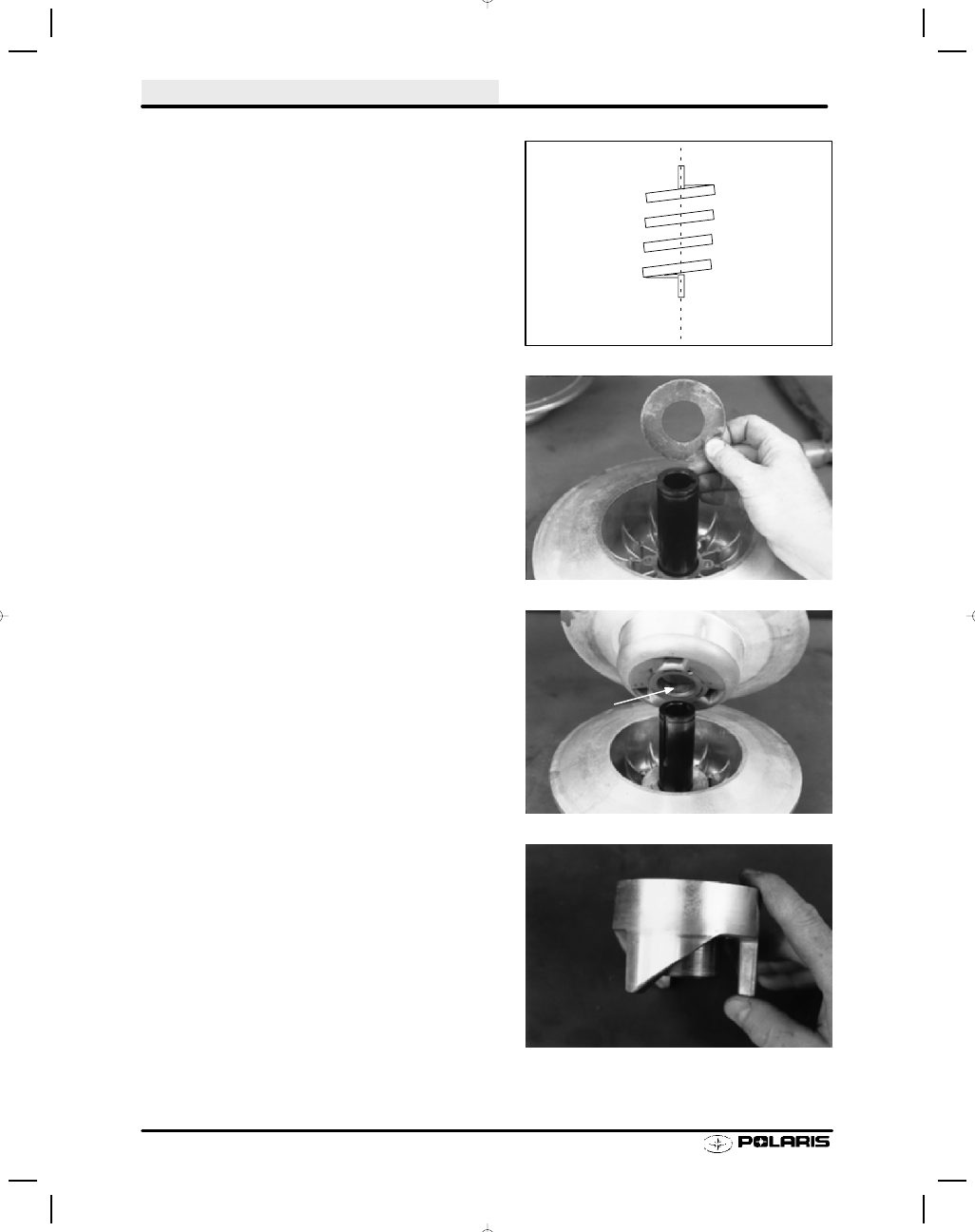Snowmobile Polaris PRO X (2003 year). Instruction - part 41

CLUTCHING
4.32
Disassembly, Cont.
5.
Remove driven clutch spring. Both spring tabs should
line up.
If not spring is fatigued and should be
replaced.
6.
Slide moveable sheave off and inspect sheave
surfaces for wear or grooving. Note size and number
of shim washers between sheaves.
7.
Note condition of moveable sheave bushing. Install
helix into bushing.
It should slide freely without
binding. See page 4.47 for bushing replacement.
8.
Polish helix with a fine emery cloth to remove any
sharp edges or build up which may cause sticking.
Tabs Aligned